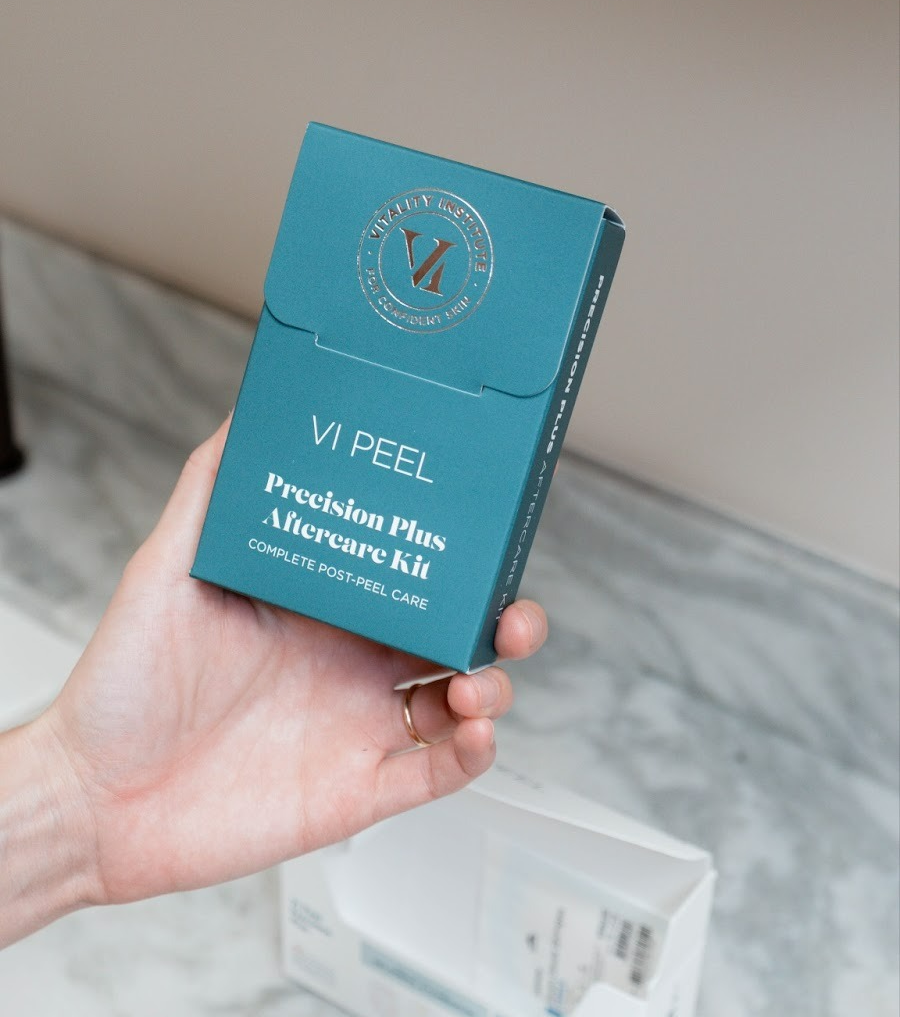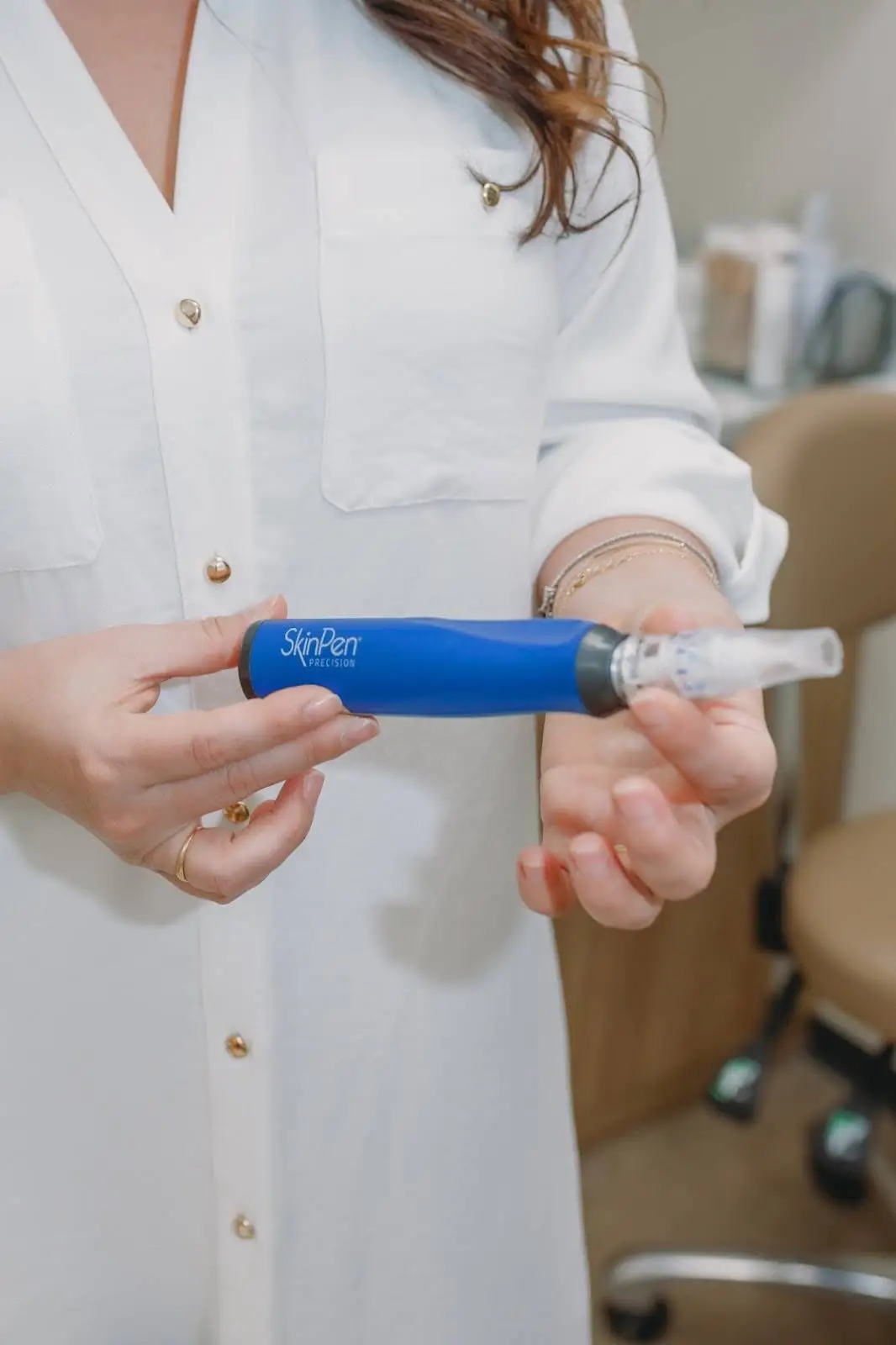
The Ultimate Guide to Neuromodulators: Which One is Right for You?

At The Skin Clinic, we specialize in administering neuromodulators to treat various areas of concern, from forehead wrinkles to sagging brows. Here’s everything you need to know about neuromodulators and how to pick the right one.
What Are Neuromodulators?
Neuromodulators are injectable treatments designed to relax muscles that contribute to the appearance of dynamic wrinkles. These wrinkles, often referred to as “expression lines,” develop due to repeated facial movements such as smiling, frowning, or squinting. Neuromodulators work by temporarily blocking the nerve signals to the muscles, preventing them from contracting and thus reducing the visibility of wrinkles.
There are several types of neuromodulators available, but the most popular ones include:
- Botox
- Dysport
- Microtox
Each of these has its unique properties, though they all work similarly to reduce wrinkles and fine lines.
Common Areas Treated with Neuromodulators
Neuromodulators are incredibly versatile and can be used to treat a variety of concerns. At The Skin Clinic, we specialize in using Botox, Dysport, and Microtox to target the following areas:
- Forehead Wrinkles: Over time, the repetitive movement of raising your eyebrows can develop horizontal lines across the forehead. Neuromodulators can smooth out these lines for a more youthful look.
- Frown Lines (Glabellar Lines): These vertical lines between the eyebrows are often caused by furrowing your brow. Neuromodulators soften these lines, giving you a more relaxed and approachable appearance.
- Crow’s Feet: The delicate skin around the eyes is prone to developing fine lines and wrinkles due to smiling and squinting. Neuromodulators can help smooth out crow’s feet while maintaining a natural look.
- Neck Bands or Cords: As we age, the muscles in the neck can become more pronounced, leading to the appearance of neck bands or cords. Neuromodulators can relax these muscles and create a smoother, more youthful neck.
- Sagging Eyebrows: Drooping eyebrows can make you appear tired or older than you feel. Neuromodulators can help lift and reposition the eyebrows, giving you a more alert and refreshed look.
- Bunny Lines: These small wrinkles, which form on the bridge of the nose when you smile or scrunch your face, can be treated with neuromodulators to smooth the skin and reduce the appearance of these lines.
- Smoker’s Lines: Vertical lines that form around the mouth, often referred to as smoker’s lines, can be softened with neuromodulators, creating a more youthful appearance.
- Marionette Lines and Mouth Corners: Neuromodulators can also help lift the corners of the mouth and reduce the appearance of marionette lines, giving your face a more balanced and youthful look.
Let’s explore the fundamental differences of each neuromodulator and determine which may be best for your concerns.
Botox
Botox is the most well-known neuromodulator on the market. It was the first FDA-approved treatment for wrinkles and has been in use for over two decades. Botox is particularly effective in treating:
- Forehead wrinkles
- Frown lines (glabellar lines)
- Crow’s feet
- Bunny lines (wrinkles on the bridge of the nose)
- Sagging eyebrows
- Smoker’s lines (vertical lip lines)
- Marionette lines and corners of the mouth
How Does Botox Work?
Botox temporarily paralyzes the muscles that cause expression lines. When injected into the target area, it blocks the release of acetylcholine, a chemical that signals muscles to contract. By relaxing the muscles, Botox prevents the skin from folding and creasing, resulting in a smoother, more youthful appearance.
What to Expect from Botox Treatment?
Botox treatments are quick, often taking 10–15 minutes, making them perfect for anyone with a busy schedule. Results typically appear within 3–5 days, with full results visible after about two weeks. Botox effects usually last 3–4 months, depending on the individual’s metabolism and lifestyle factors.
Botox is an excellent option if you are looking for a time-tested treatment that offers consistent and long-lasting results. It is especially effective for treating moderate to severe wrinkles in the upper face.
Dysport
Dysport is another popular neuromodulator, similar to Botox, but with some key differences that make it an attractive option for certain individuals. Dysport is primarily used to treat:
- Frown lines
- Forehead wrinkles
- Crow’s feet
How Does Dysport Differ from Botox?
While both Botox and Dysport contain the same active ingredient (botulinum toxin type A), Dysport’s formulation allows it to diffuse more easily over larger areas. This makes Dysport ideal for treating broader areas of the face, such as the forehead or crow’s feet, where multiple injections are needed to cover the surface area.
What to Expect from Dysport Treatment?
Dysport tends to act faster than Botox, with some patients seeing results as soon as 24–48 hours after treatment. This makes it a great choice for those looking for quick results before a big event or occasion. Similar to Botox, Dysport’s results last about 3–4 months.
Dysport is a fantastic option if you are looking for a treatment that works quickly and effectively covers larger areas of concern. It is also a good alternative for those who may not have achieved the desired results with Botox.
Microtox
Microtox, also known as “Baby Botox,” is a newer treatment that uses smaller amounts of botulinum toxin to achieve a softer, more natural look. It is ideal for treating:
- Fine lines
- Sagging eyebrows
- Neck bands or cords
- Mouth corners
How Does Microtox Work?
Microtox works similarly to Botox and Dysport but is injected in much smaller doses. This makes it perfect for individuals who want to improve their appearance without the more “frozen” look that can sometimes result from traditional Botox treatments.
Microtox is particularly effective for treating delicate areas, such as around the eyes or mouth, and for individuals who are just starting to notice signs of aging. It can also be a preventive treatment for younger patients who want to maintain their youthful appearance.
What to Expect from Microtox Treatment?
Since Microtox uses smaller doses, the results tend to be more subtle than those of Botox or Dysport. This makes it an excellent choice for anyone seeking a natural, “untouched” look. Results typically appear within 3–5 days and can last anywhere from 2–4 months, depending on the individual.
Microtox is ideal for those looking for a softer, more subtle approach to wrinkle reduction, especially if they want to target fine lines or prevent the formation of deeper wrinkles.
Which Neuromodulator is Right for You?
Choosing the right neuromodulator depends on your needs, aesthetic goals, and the areas you wish to treat. Here’s a quick breakdown to help you decide:
- Choose Botox if: You want a tried-and-true treatment for moderate to severe wrinkles and are looking for consistent, long-lasting results. Botox is perfect for treating wrinkles on the upper face, including frown lines, forehead wrinkles, and crow’s feet.
- Choose Dysport if: You need a fast-acting treatment covering larger areas of the face, such as the forehead or around the eyes. Dysport is ideal for anyone looking for quick results with minimal downtime.
- Choose Microtox if: You want a softer, more natural approach to wrinkle reduction. Microtox is perfect for treating fine lines and delicate areas or for anyone looking for a preventive anti-aging treatment.
Ready for a More Youthful You?
At The Skin Clinic, we’re dedicated to helping you achieve your aesthetic goals with the most advanced treatments. Whether you’re interested in Botox, Dysport, or Microtox, our expert team guides you every step of the way. Book Your Neuromodulator Treatment in Texas – Schedule now!
Recent Posts


VI Peels Explained: Your Comprehensive Guide to Skin Rejuvenation

Upneeq for Bright, Alert Eyes: Who It’s For and How It Works

How B12 Shots Boost Energy and Skin Health: The Wellness Connection

One Size Doesn’t Fit All: Treatments Tailored to Your Needs


